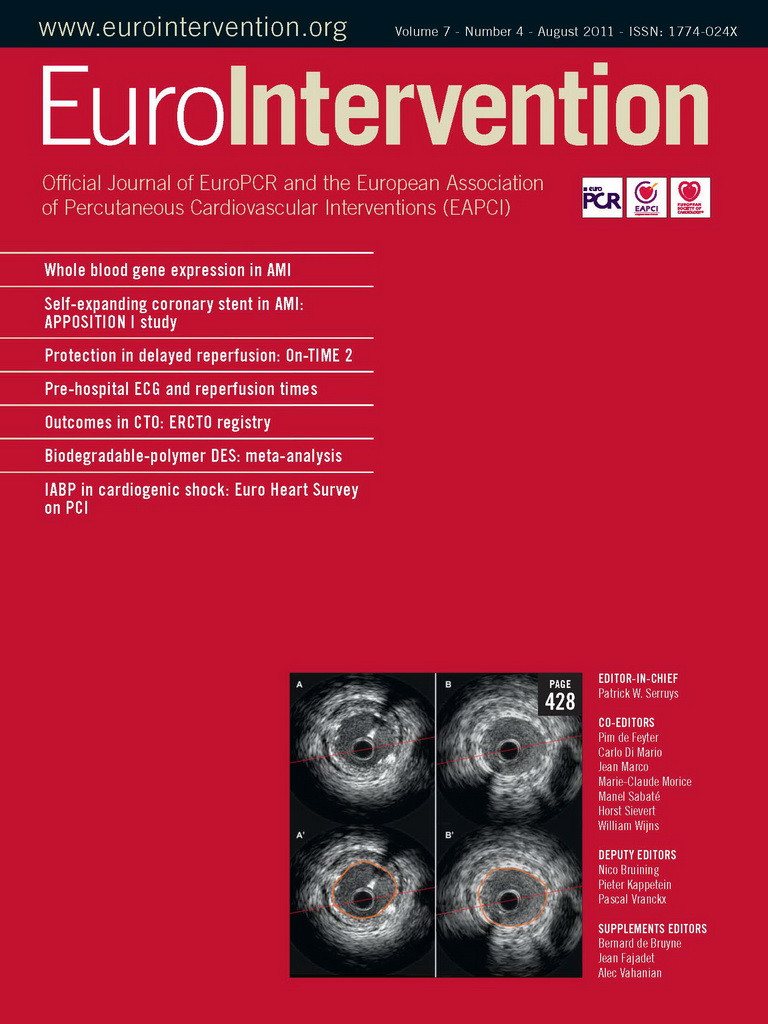Dear colleagues,
I don’t know about you, but it seems that I live in a rhythm that is as much marked by the changing seasons as it is by the professional meeting and congresses that are held at regular intervals throughout the year. Before it was the spring, now it is the time for EuroPCR; before it was that point in summer when our European holidays were coming to an end –when the responsibilities of autumn are not far ahead– and today, that sense of seasonal change has been supplanted by what has become one of the largest medical gatherings in the world, the European Society of Cardiology (ESC), this year in Paris.
As an integral part of the ESC, EuroPCR, the EACPI and EuroIntervention will be well represented, with many of our members animating sessions and presenting work. This year’s overall theme is on “controversial issues in cardiology”, and we try with each issue of our journal to fuel those discussions in a positive and constructive way that can lead to breakthroughs in our research, understanding and treatment of cardiovascular disease. In this spirit, the current issue of EuroIntervention focuses on acute myocardial infarction (AMI), with a series of articles on how we approach it from amore specifically, “interventionalist” standpoint.
Spotlight on AMI
An interesting analysis of the Euro Heart Survey on PCI, covering an important aspect currently under investigation in this large-scale randomised trial, is the paper by Uwe Zeymer et al which discusses the “Use and impact of the intra-aortic balloon pump on mortality in patients with acute myocardial infarction complicated by cardiogenic shock.” Paolo Ortolani and colleagues, using a single-centre retrospective registry, present us with a critical paper comparing two different approaches to a STEMI network and although the results were to some degree disappointing, we believe it is important to publish. “Pre-hospital ECG in patients undergoing primary percutaneous interventions within an integrated system of care: reperfusion times and long-term survival benefits” as it challenges our notions of improving care by suggesting that a pre-hospital triage strategy might prove to have long-term survival benefits in high-risk patients.
In the article “Transcriptional fingerprint of human whole blood at the site of coronary occlusion in acute myocardial infarction” Olivier Muller et al attempt to define the inflammatory and angiogenic gene expression profile of whole blood cells at the site of occlusion in AMI patients, deciphering “...the angiogenic, atherosclerotic, and inflammatory mRNA profiles... in patients with ST-elevation myocardial infarction”, proposing an important hypothesis which can help stimulate further studies. Ronak Delewi and colleagues offer us the first study on the “Acute haemodynamic effects of accelerated idioventricular rhythm (AIVR) in primary percutaneous coronary intervention” showing that the haemodynamic effects of AIVR are not accompanied by a large increase in heart rate and examining the background as well as their relation to the anatomical site of the lesion.
Ton Heestermans et al tackle the “Higher efficacy of pre-hospital tirofiban with longer pre-treatment time to primary PCI: protection for the negative impact of time”, concerning the impact of time delay on outcome in STEMI patients treated with PCI. The analysis is based on a group enrolled into both open-label and double-blind phases of the On-TIME 2 trial. Another trial, evaluating the safety and feasibility of a novel self-expanding stent in the setting of STEMI is the “Assessment of the safety and performance of the STENTYS self-expanding coronary stent in acute myocardial infarction: results from the APPOSITION I study” by Giovanni Amoroso et al.
The EuroCTO season
Keeping with our seasonal theme, we announce the early autumn, EuroCTO club’s third “Experts ‘Live’ Workshop”, September 23-24, in Wiesbaden, Germany. To underline their work, in this issue of the journal we are publishing the article on “In-hospital outcomes of percutaneous coronary intervention in patients with chronic total occlusion: insights from the ERCTO (European Registry of Chronic Total Occlusion) registry” by Alfredo R. Galassi and colleagues. An important publication in the field, and a first representing one of the largest registries reporting outcome following utilisation of contemporary techniques in recanalisation of chronic total occlusions (CTO), these first year experiences of the ERCTO Registry by the EuroCTO club show “a high procedural success rate obtained by expert operators in a consecutive series of patients.” A fascinating report, and a subject we will focus on extensively in an upcoming issue of EuroIntervention.
Continuity
This aspect of continuity is crucial to what we are attempting to accomplish. Seasons may change, congresses may come and go, but we as a journal strive for a certain longevity in the way we approach issues and ideas. It is not because we are part of a fast changing speciality that we do not adhere to the long standing values that have directed our profession as doctors. Our continued and sustained desire to uncover the best practice, focusing on specific subject areas and ideas, re-visiting them year-after-year, such as the work of the CTO club, helps us not only understand developments and keep abreast of changes, but allows us to be part of an ongoing dialogue, at the centre of the educational and communication values of this journal.
We are pleased that you can join us here in these pages and join in that discussion.

